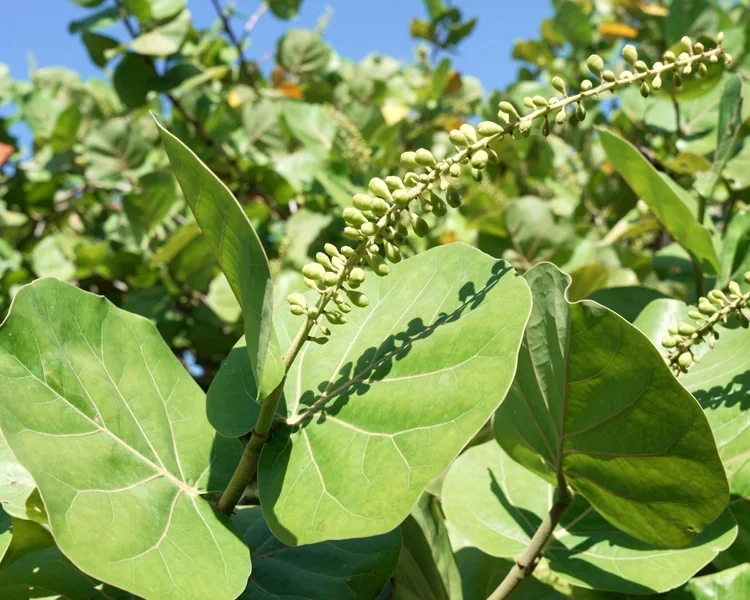Seagrapes and leaky sex
As humans we are obsessed with bins. We bin the types of clouds into four basic forms, try to place songs into strict genres, and categorize organisms into species, genera, and families. It is true that categorizing is important for grappling with immense diversity—indeed, songs and species seem to evolve, but perhaps at much different rates. However, binning often generalizes; it can dilute the natural variation, forcing us into a binary, or at least a more limited set of options.
When Ben and I were botanizing in South Florida, we filmed a video on the floral morphology and fruit structure of seagrape (Coccoloba uvifera). We came across our first individual— they are a dime a dozen along the coast—and we noticed that some individuals bore tremendous amounts of fruit while others had none. This led us to believe that this species is dioecious—meaning it has separate plants that only produce pollen-bearing flowers (“males”) and other plants that only produce seed-bearing flowers (“females”). I will explain the quotes in a later post.
So, we filmed, said the species was dioecious and moved on. As we kept walking by more and more individuals we noticed that some only had fruits or pollen bearing flowers, but every once in a while we saw a plant that seemed to produce pollen-bearing flowers, but had a few fruits developing on their inflorescence. We eventually convinced ourselves that this species was actually monoecious. This was easy enough, maybe the plants that had fruits had dropped all their pollen-producing flowers and those that had pollen producing flowers did not have ripe fruits yet, no problem. So, we simply re-filmed that bit and kept going.
Seagrape Coccoloba uvifera
When I got back to the hotel and had wifi, a quick Wikipedia search (I am not above it) told us that this species was, in fact, dioecious! Had my eyes deceived me? We clearly saw many individuals that bore both fruits and pollen-producing flowers on the same branch—this is the definition of a monoecious plant. Ben and I started to suspect that this extremely common sea-side species may be evading proper reproductive circumscription. Having sex in its own unique way under everyones nose.
But, flowering plants are not just monoecious or dioecious, they can be “leaky.” A species that is described as “leaky dioecious” is one that usually has the aforementioned reproductive strategy, but sometimes can produce pollen- or seed-bearing flowers together on a single plant. I have always found this phrase interesting as it implies the reproductive system of the species is an accident, somehow less fit than either dioecious and monoecious, individually. Also, it makes me think that the plant is somehow wet. Could C. uvifera be leaky?
I consulted the scientific literature and sure enough, found a paper published in 1996 entitled by Rosario Madriz and Nelson Ramírez “Biología reproductiva de Coccoloba uvifera (polygonaceae) una especie poligamo-dioica”, or Reproductive biology of Coccoloba uvifera (Polygonaceae), a polygamous-dioecious species. Polygamous just means the plant can have bisexual or unisexual flowers (in otherwords, leaky). This is essentially the only paper on the topic, and at present only 24 other papers cite this one (based on a Google Scholar review). The few that cite it directly focus on broader trends and often make the statement that C. uvifera is dioecious, sometimes explaining that it can be leaky or polygamous.
Just to be sure, I emailed Dan Koenemann, expert in Coccoloba and Polygonaceae. He told me that the family as a whole has complex reproductive strategies, and C. uvifera is no exception. They actually have an active grant from the National Science Foundation to study this (Award 2401525). I am excited to learn more about Coccoloba sex soon.
So, Ben and I have two takes of this video, one where I call theplant dioecious and one where I call the plant monoecious. A fittingly confusing scene for a plant that doesn’t conform to our bins and categories. Maybe we will just put both takes in the final video, back to back.
May 31, 2025


